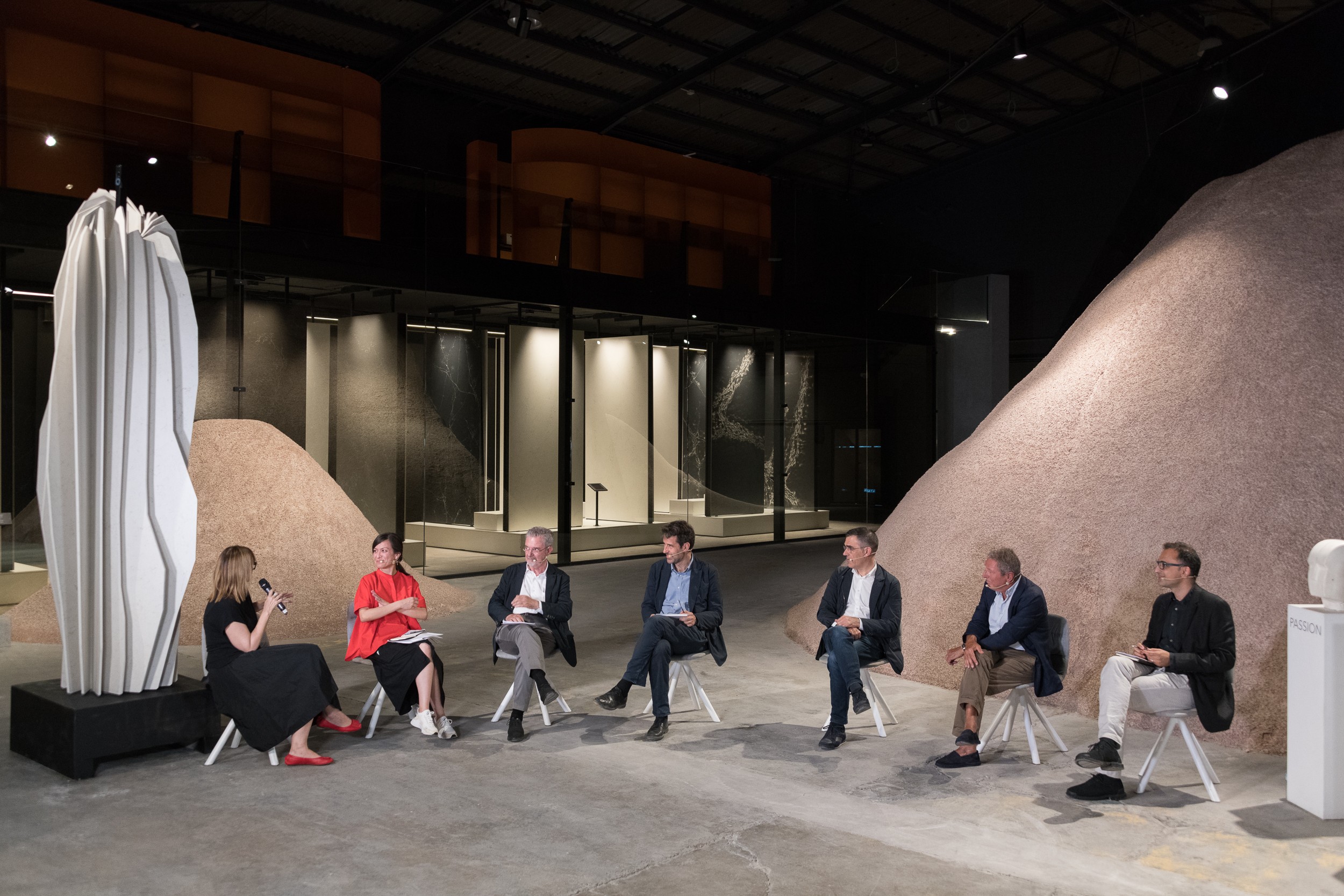Beyond whatever apparent links there may be between architecture and urban planning, a set of ebbing and flowing relationships lies behind them. The two disciplines together are seen as a field of study in and of itself, urban design being structured, built and planned around the existing architecture in a city.
World Town Planning Day was celebrated on 8th November with a view to attaining sustainable planning in public spaces. This awareness is not only necessary for designing areas but also for the buildings within those very same settings.
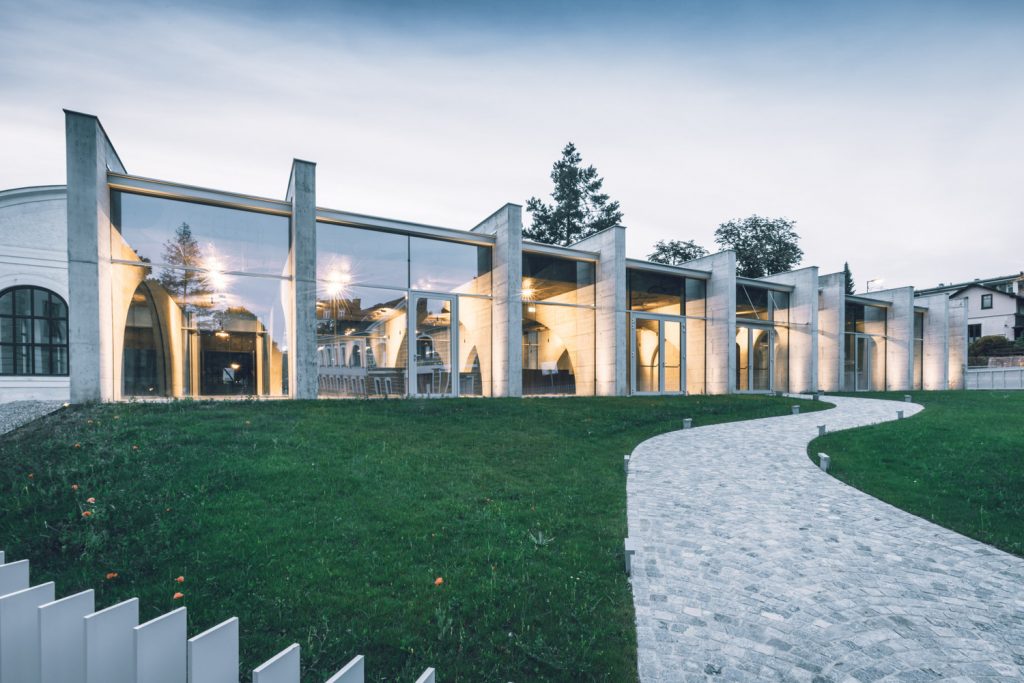
Neuhaus Salon / Baukooperative, 5th July 2021. Plataforma Arquitectura.
Based on the relationship between urbanism and architecture, The Decorative Surfaces offers an important sociological, aesthetic and functional reflection in contemporary times. Contemplating this perspective through public projects that aim to bring together elements such as morphology, space, function and beauty.
This approach emerges at different architecture biennials around the globe. An event where architecture and urban planning come together and contrast, as witnessed last June at the Spanish Biennial of Architecture and Urbanism (BEAU).
The city as a meeting place
At times, the disciplines are not particularly cohesive since architecture works independently, whereas urbanism covers all elements in a public space. Nonetheless, this is not always the case if we take into account proposed best practice in the architectural sphere: a new building should be seen as a whole, especially when it comes to publicly owned structures. It should respond and function, aesthetically fusing with the surrounding space. Beyond functionality, architectural landmarks need to harmoniously co-exist.
In this vein, an architectural project cannot be understood without prior urban planning analysis. In turn, urban planning cannot be explored without taking into account the buildings within said space. Both disciplines work towards improving quality of life.

Centr’Al Cultural and Sports Centre / B-architecten, 9th April 2021. Plataforma Arquitectura.
At the heart of everything lies the place where it all happens: the city. An inherent cultural identity develops in the space, establishing a personal relationship between passers-by, the wider public and the structure itself. Pedestrians on their way decide where to walk using urban structures such as streets, parks or green areas, squares and functional buildings. And the latter takes on more material focus in the architectural sphere.
Public cornerstones and colour transparency in Belgium
Outside the basic needs of transport, food and health, buildings that are in constant renovation, such as publicly-owned cultural or sports complexes, may not always be fully appreciated. These structures encapsulate a life for wellbeing and are ever-present inflections for developing a clear identity. Without them, people feel isolated; and thanks to them, public perspectives develop towards increased confidence.
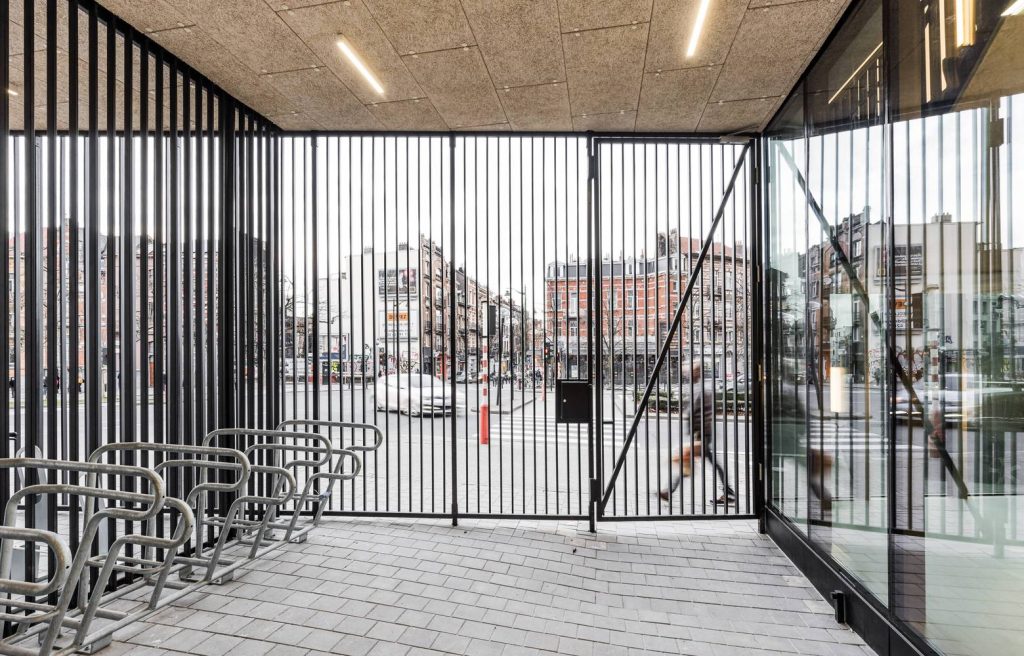
Centr’Al Cultural and Sports Complex / B-architecten, 9th April 2021. Plataforma Arquitectura.
An excellent example is found in the municipality of Vorst, in the Brussels region. It is undoubtedly a space that sets up a necessary dialogue, where structures serve as a gateway to the surrounding districts. Albertpool is an excellent opportunity to put Vorst, a vibrant part of the city, on the map.
Visitors can enjoy large public areas, alongside the auditorium and the sports halls, located on the buildings’ corners. It is a structure defined by volume and visibility. The transparent and translucent approach invites us to understand and appreciate this spatial intersection. Meanwhile, the compact, connective elements are framed as an ongoing, dynamic dialogue with the city.
Conversations between architecture and green spaces in Austria
The need for including green spaces within public areas can clearly be seen in urban spaces in countries such as Austria. Here, spaces are designed for life to flourish and co-exist through structures that are immersed within new, remodelled buildings. In this sense, the Neuhaus Salon is a sublime example of co-existence, where green space surrounds and frames the structures.
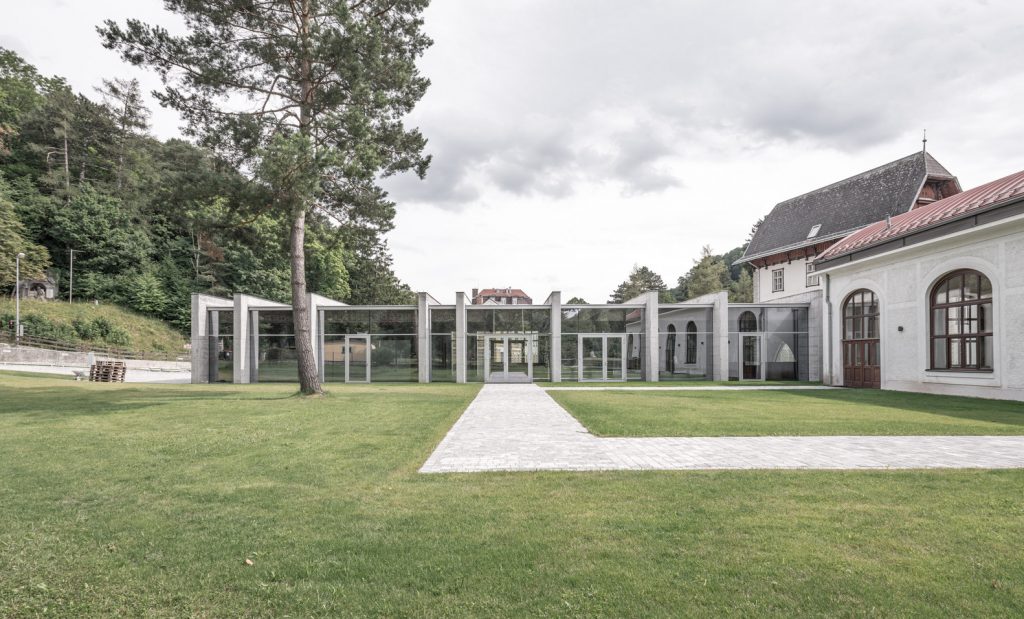
Neuhaus Salon / Baukooperative, 5th July 2021. Plataforma Arquitectura.
By creating a consistent setting, the land and the building take on a magical reverence through purposeful remodelling within the landscape. This approach offers noticeable differences in creating an intimate atmosphere based on the original construction. It is not about replacing the old with the new, but rather integrating, representing and revering it. This dissolution symbolises historical perfection and the symbiosis between future needs and historicism with balance and professionalism.
At a structural level, the composition is framed via insulating concrete panels that magnificently reflect a sense of balance. Glass is also used as a material to support, visualise and provide quality on a sensorial and artistic level. In this way, the construction opens up to the natural setting whilst creating a permeable state.
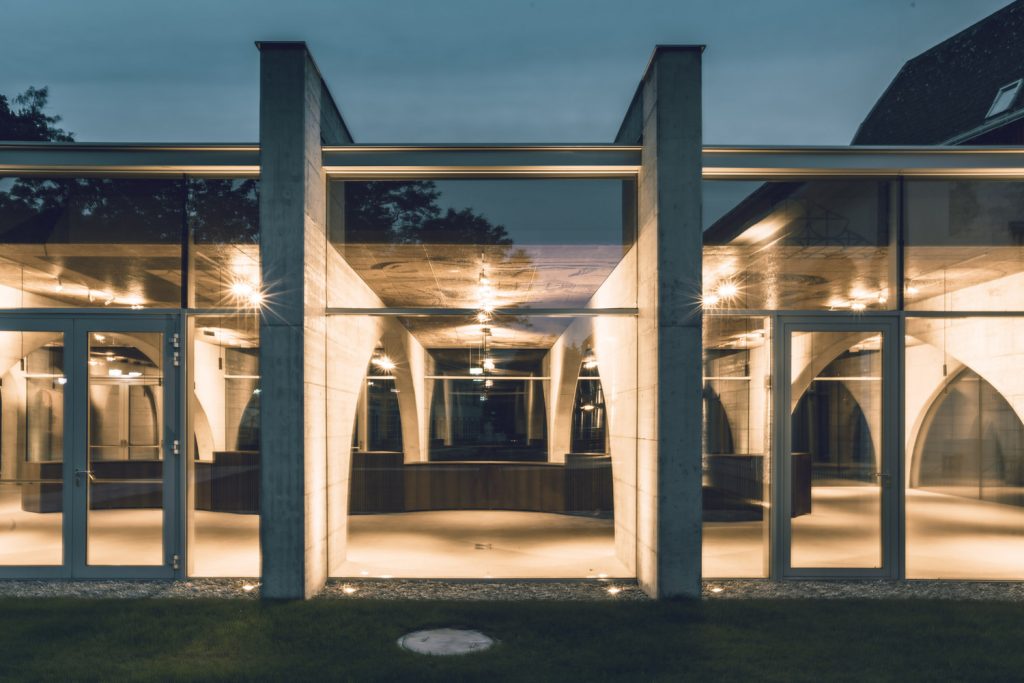
Neuhaus Salon / Baukooperative, 5th July 2021. Plataforma Arquitectura.
At an aesthetic level, the building stands out for showcasing the dominant design of the original structure. Rounded arches play with this openness, making the building an example of the hidden interdependence between old and new. Indeed, it is a testament to the necessary relationship between past, present and future.
This is how projects connect and become flexible: as a way to showcase the necessary co-existence between architecture and urbanism. To separate the two would be ignoring people’s relationships, and put a stop to how places develop their identity.

